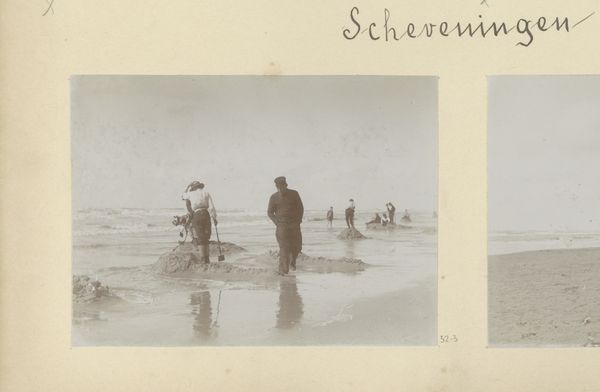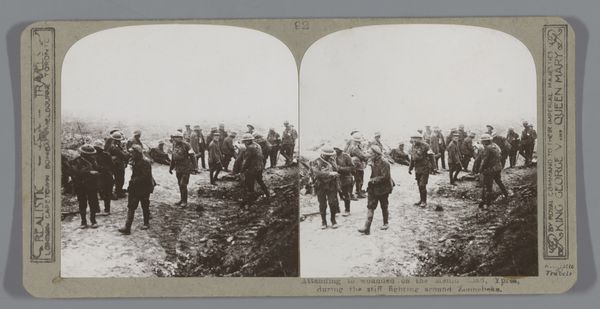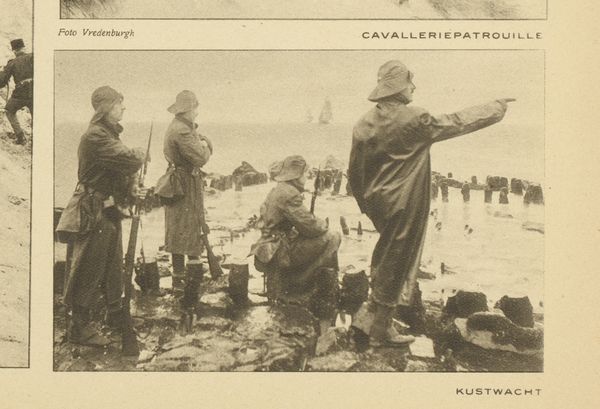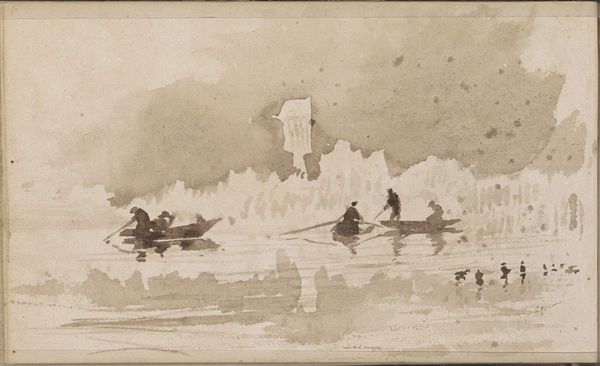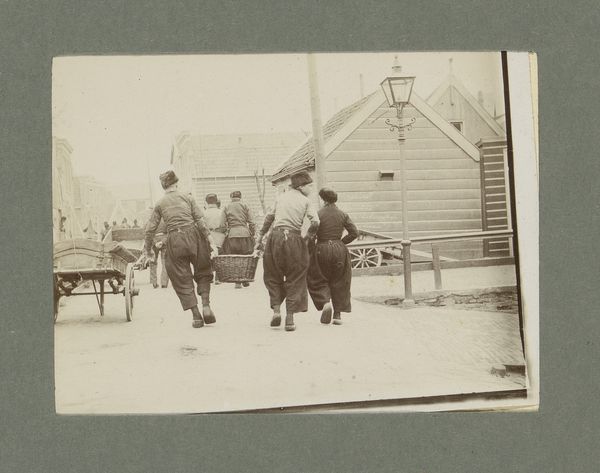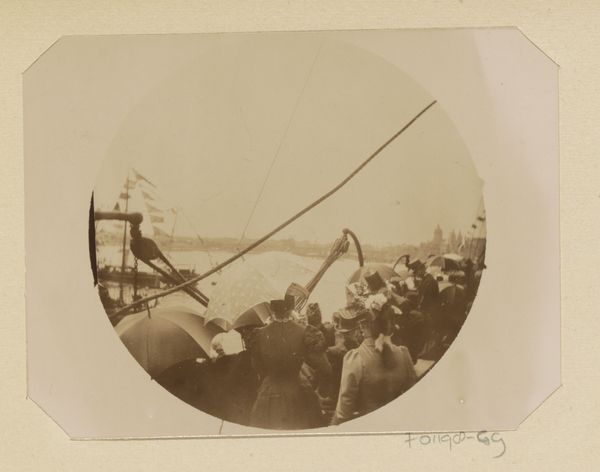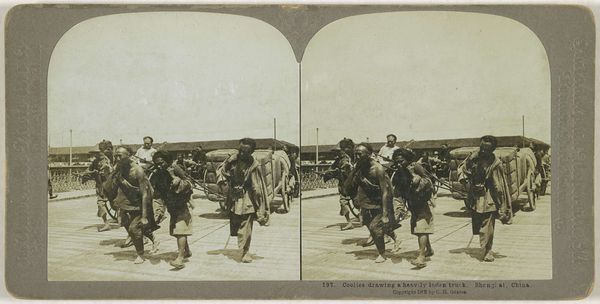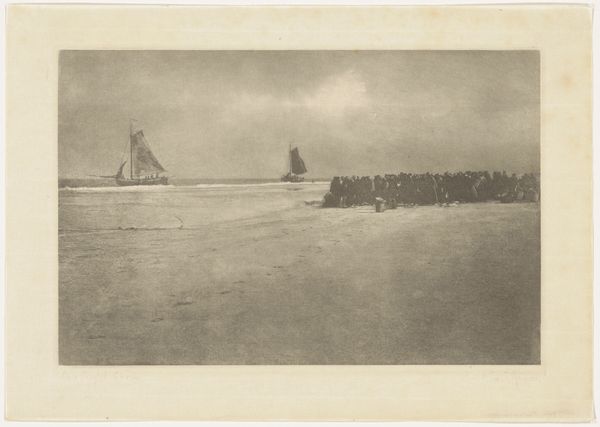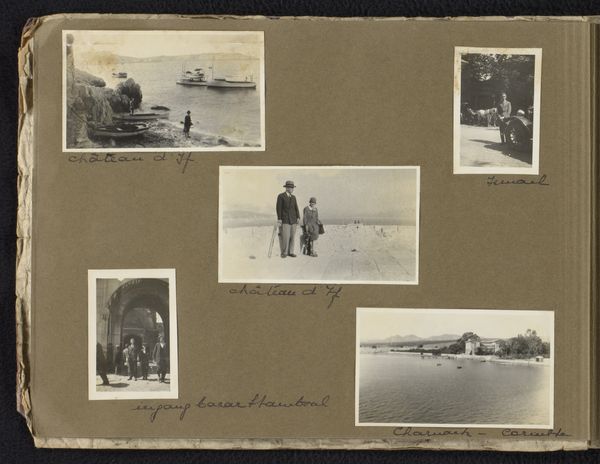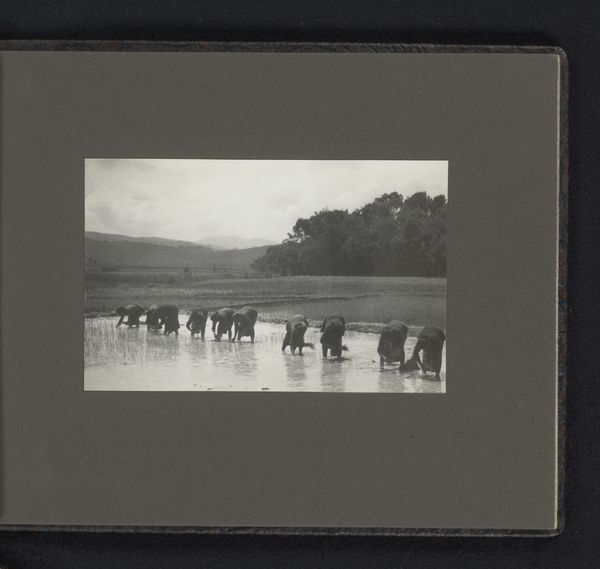
Reproductie van Visserskinderen door Bernardus Johannes Blommers 1905 - 1906
0:00
0:00
photography, gelatin-silver-print
#
archive photography
#
photography
#
historical photography
#
gelatin-silver-print
#
genre-painting
#
realism
Dimensions: height 82 mm, width 45 mm
Copyright: Rijks Museum: Open Domain
Curator: Here we have a gelatin-silver print titled *Reproductie van Visserskinderen* (*Reproduction of Fishing Children*) dating from 1905-1906, after a work by Bernardus Johannes Blommers. Editor: It feels very staged, doesn't it? The composition, the lighting, even the expressions seem meticulously arranged to evoke a kind of rustic ideal. Almost performative poverty. Curator: I can see that, but the symbolic language of childhood labor here isn’t necessarily about poverty. More broadly, in that era it speaks to the enduring values associated with hard work, familial duty, and the natural world. The image presents these children working in harmony with the sea. There’s an enduring power to those archetypes. Editor: Harmony, perhaps. But what is harmonious about children toiling? Doesn't this idealization erase the very real struggles faced by working-class families? It disguises labor as innocent play, perpetuating a romantic, and frankly, exploitative narrative. Curator: Yet consider the persistence of certain symbols: the sea representing both bounty and risk; children signifying innocence and the future. Blommers reproduces the painting in photograph, layered in medium and also in cultural value as well. How do these historical depictions echo in modern consciousness? Don't these scenes persist in our imaginations about coastal communities? Editor: They persist, undeniably. That is the key. These idealized depictions inform contemporary perceptions and shape policy even today. Consider the lasting impact of images like this on shaping our understanding of labor laws, child welfare, and socio-economic disparities within coastal areas. This photo, however, may only perpetuate inequity. Curator: And how! It becomes a touchstone to explore continuity and also challenge ingrained assumptions. This reproduction, displayed here at the Rijksmuseum, does so, encouraging a necessary, difficult dialogue. Editor: Precisely. Let's hope such dialogues will lead to some real action!
Comments
No comments
Be the first to comment and join the conversation on the ultimate creative platform.
